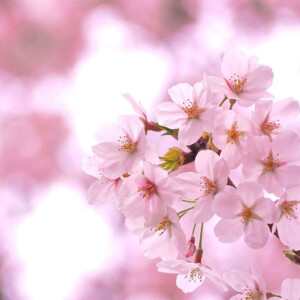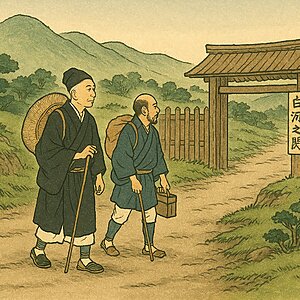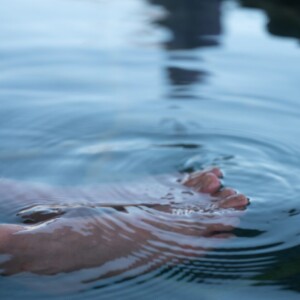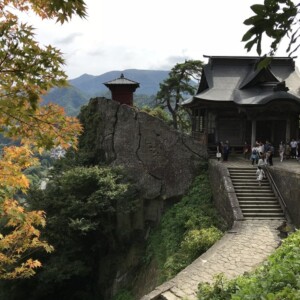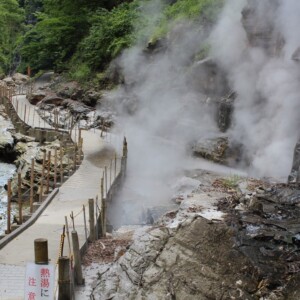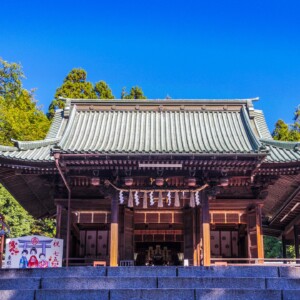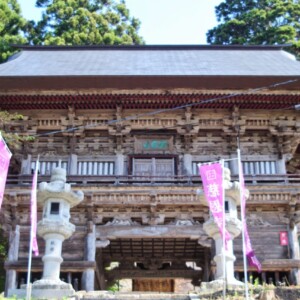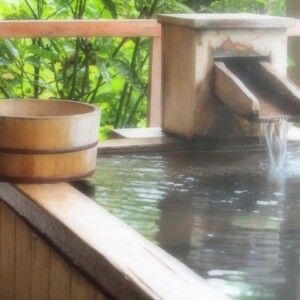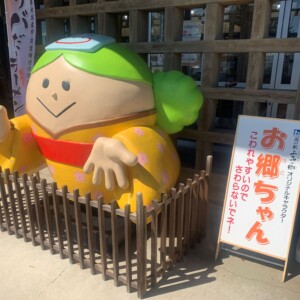
Tagajo, the mysterious northern capital that also appears in the poetry pillows of the Heian period [Miyagi Prefecture]
table of contents
- 1 Taga Castle, which completely lost its function at the end of the Heian period
- 2 The ruins of Tagajo Temple prove that Tagajo was the northern capital
- 3 The remains of the residence of a provincial governor who was transferred from the capital? "Tatemae Ruins"
- 4 Kashiwagi Ruins, where the remains of an ironworks were discovered
- 5 Tagajo, a place admired by people from the capital and sung about in utamakura poems
- 6 Matsuo Basho traveled around the Taga Castle ruins, relying on utamakura
- 7 The ancient monument "Tsubohi" from the Nara period that records Taga Castle
- 8 "Noda's Tamagawa" was the most scenic spot in Tagajo
- 9 "Okii" is a heartbreaking story of a woman who doesn't want to break up
- 10 "Sueno Matsuyama" - a place that has never been overtaken by waves, either in the past or now
Taga Castle was built during the Nara period by the Yamato court as a base for controlling the uncivilized Emishi (Tohoku region), and served as the provincial capital and military base for the Tohoku region, then known as Mutsu Province.
Taga Castle, which completely lost its function at the end of the Heian period

In the 800s, Sakanoue no Tamuramaro's conquest of the Emishi people advanced further north, and the naval base was moved to Isawa Castle (Mizusawa, Oshu City, Iwate Prefecture). Later, with the rise of the Oshu Fujiwara clan, Hiraizumi (Hiraizumi Town, Iwate Prefecture) became the center of Mutsu Province, and Taga Castle gradually declined, eventually completing its role in the mid-11th century
Taga Castle Ruins <Information>
- Name: Taga Castle Ruins
- Address: Ichikawa, Tagajo City, Miyagi Prefecture, 985-0864
- Phone number: 022-364-5901 (Tagajo City Tourism Association)
- URL: Tagajo City Tourism Association
Google Map
The ruins of Tagajo Temple prove that Tagajo was the northern capital
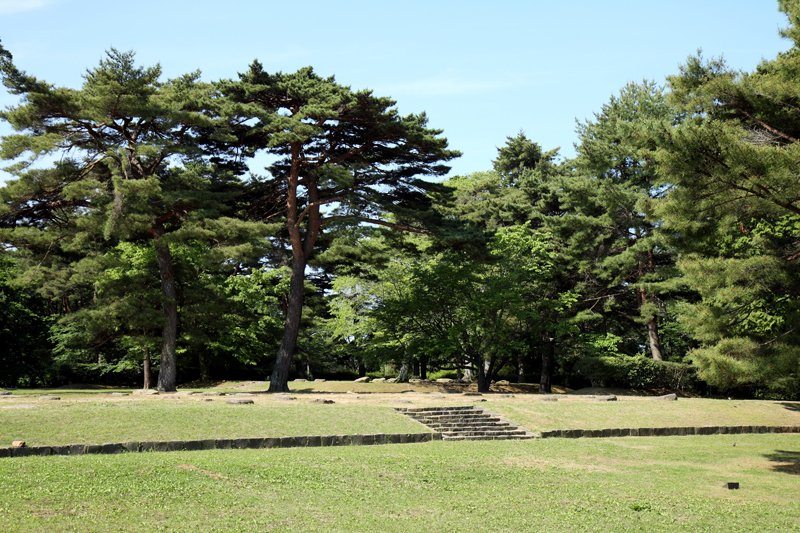
The Tagajo Ruins are located about 800m southeast of the Tagajo Ruins and were built at the same time as Tagajo Castle. Recent excavations have revealed that the layout of this temple's buildings is the same as that of Kanzeonji Temple, which is attached to Dazaifu (Dazaifu City, Fukuoka Prefecture), and it is thought that it was likely an annex to Tagajo Castle. Currently, the Tagajo Ruins have been developed as a park. A special national historic site
Tagajo Temple Ruins <Information>
- Name: Taga Castle Ruins
- Address: 3-13-3 Takasaki, Tagajo City, Miyagi Prefecture, 985-0862
- Phone number: 022-364-5901 (Tagajo City Tourism Association)
- URL: Tagajo City Tourism Association
Google Map
The remains of the residence of a provincial governor who was transferred from the capital? "Tatemae Ruins"
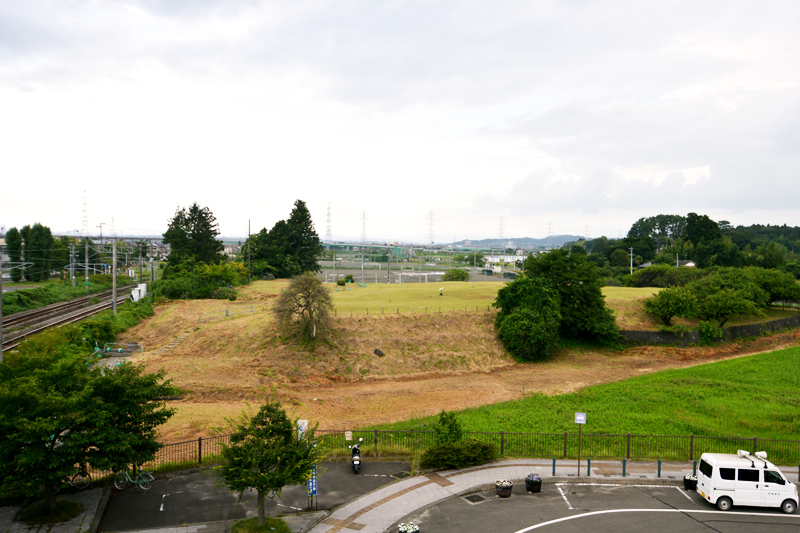
About 200 meters southeast of the Taga Castle ruins, the remains of six buildings (Tatemae Ruins) were discovered, centered around a building as large as the Taga Castle Government Office. These are thought to have been residences for people who were transferred from the capital around the 9th century, or important facilities for Taga Castle. It is a national special historic site
Tatemae Ruins<Information>
- Name: Tatemae ruins
- Address: Ukishimakanmae, Tagajo City, Miyagi Prefecture, 985-0861
- Phone number: 022-364-5901 (Tagajo City Tourism Association)
- URL: Tagajo City Tourism Association
Google Map
Kashiwagi Ruins, where the remains of an ironworks were discovered
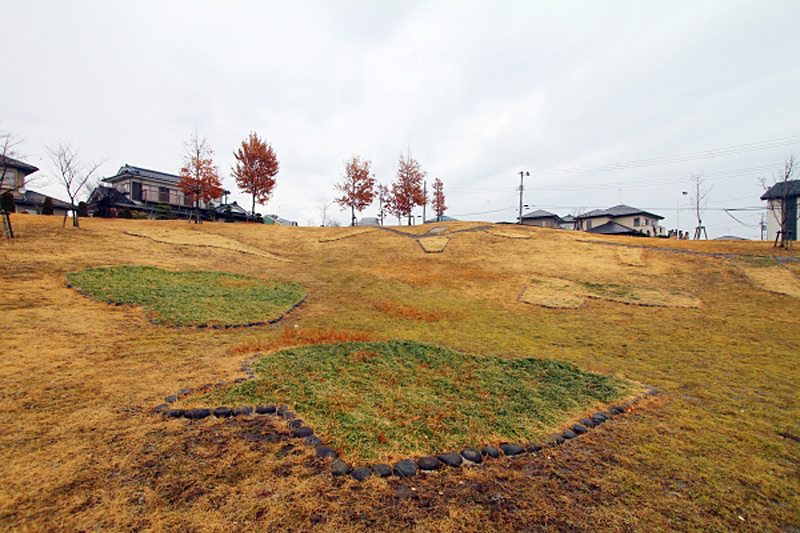
At the Kashiwagi Ruins, located about 4km southeast of the Taga Castle ruins, iron furnaces and charcoal kilns have been discovered, and it is believed to be the remains of an ironworks built in the first half of the 8th century. At the time, iron sand was available on the coast in front of the site, and it appears that it was used as a raw material for iron. The Kashiwagi Ruins are a special national historic site
Kashiwagi Ruins <Information>
- Name: Kashiwagi Ruins
- Address: 5-16-40 Oshiro, Tagajo City, Miyagi Prefecture, 985-0832
- Phone number: 022-364-5901 (Tagajo City Tourism Association)
- URL: Tagajo City Tourism Association
Google Map
Tagajo, a place admired by people from the capital and sung about in utamakura poems
For the people of Nara and Kyoto, Tagajo was a faraway, unknown place that only special people could visit. The "northern capital" that people had heard rumors about was a place of longing and curiosity for them. They imagined the place as a utamakura (famous place) that was written about in the poetry of people who had been posted to Tagajo and seen it
Matsuo Basho traveled around the Taga Castle ruins, relying on utamakura
As time passed, a man became interested in Oshu (the Tohoku region), including Taga Castle, which had disappeared in the 11th century during the Edo period and only rumors remained of it. That man was Matsuo Basho. Accompanied by his disciple Sora, he embarked on a journey through Oshu from 1689 to 1691 and compiled his findings in "Oku no Hosomichi" (published in 1702)
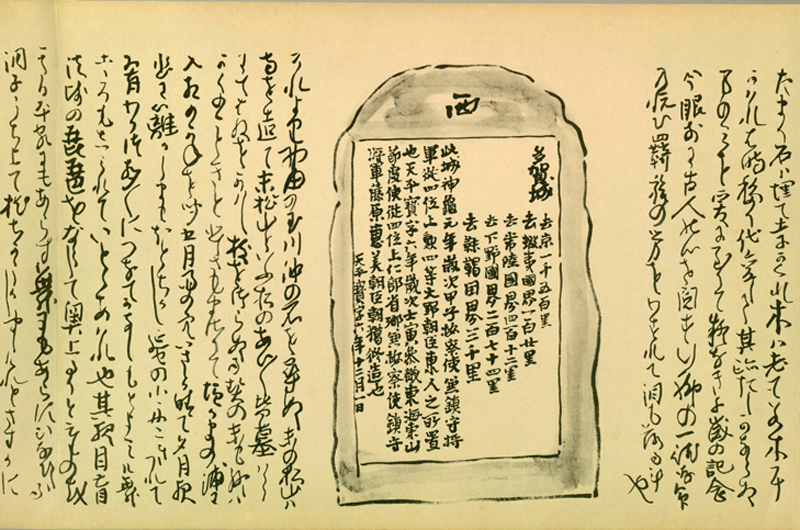
The ancient monument "Tsubohi" from the Nara period that records Taga Castle
Basho walked from Sendai along the Shiogama Highway to Taga Castle. The first place he visited was the Tsubo no Ishibumi monument
The hues of Mutsu Province are so elegant that they make me think of the stone tablet in the pot, and the sea breeze outside (Saigyo [Sankashu])
The "Tsubohi" monument, erected near the south gate of the Taga Castle ruins, is the work of Saigyo, a warrior, monk, and poet who traveled throughout Japan from the late Heian period through the Kamakura period, who wrote about a place he "wanted to visit." It is an ancient monument believed to have been erected around the 8th century, and records the distance from Nara (Heijokyo), Shimousa Province, and Hitachi Province to Taga Castle, as well as the date of its construction. Discovered at the beginning of the Edo period, it is now preserved within a building that covers the entire site, and has been designated an Important Cultural Property of Japan as the "Taga Castle Monument."
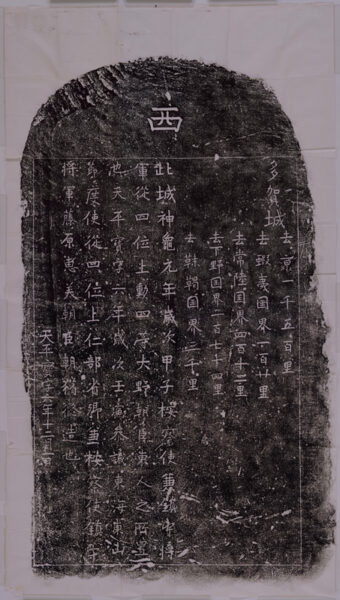
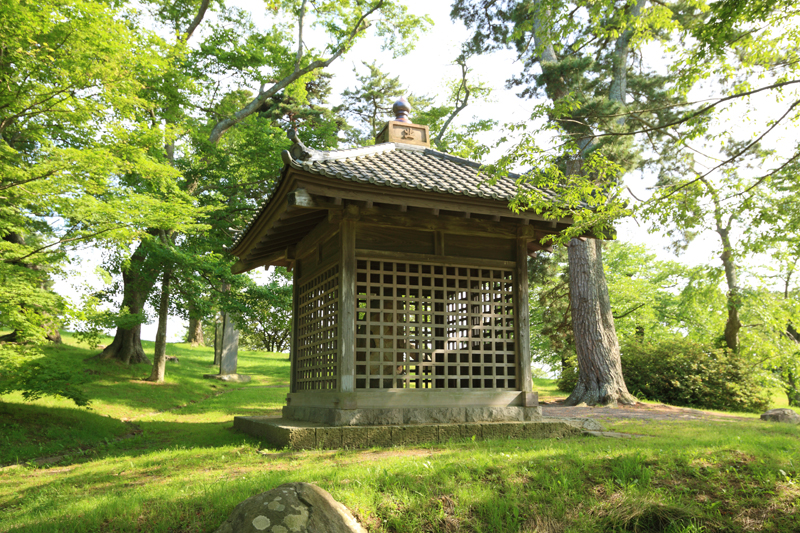
Tsubohi (Tagajo Monument) <Information>
- Name: Jar Monument (Tagajo Monument)
- Address: 16 Ichikawadayaba, Tagajo City, Miyagi Prefecture, 985-0864
- Phone number: 022-364-5901 (Tagajo City Tourism Association)
- URL: Tagajo City Tourism Association
Google Map
"Noda's Tamagawa" was the most scenic spot in Tagajo
Basho walked from the Tsubohi monument to the ruins of Taga Castle, but the surrounding area has changed due to natural disasters and other factors, so it is difficult to come across the scenery depicted in the Utamakura poem
We finally found "Noda no Tamagawa" and then visited "Okinoi" (Okinoishi/Okinoi) and Sueno Matsuyama
As the evening approaches, a gentle breeze blows across the Tamagawa River in Noda, Michinoku, and the plovers disappear. (Noin Hoshi [Shin Kokin Wakashu])
Noda no Tamagawa, the name of which the Heian period monk Noin Houshi wrote, "In the evening, the cries of plovers can be heard on the sea breeze over Noda no Tamagawa," is a small river that flows near Taga Castle. It currently flows through the city, and bank protection construction makes it impossible to see what the scenery looked like before, but it must have been a very scenic place during the Edo period
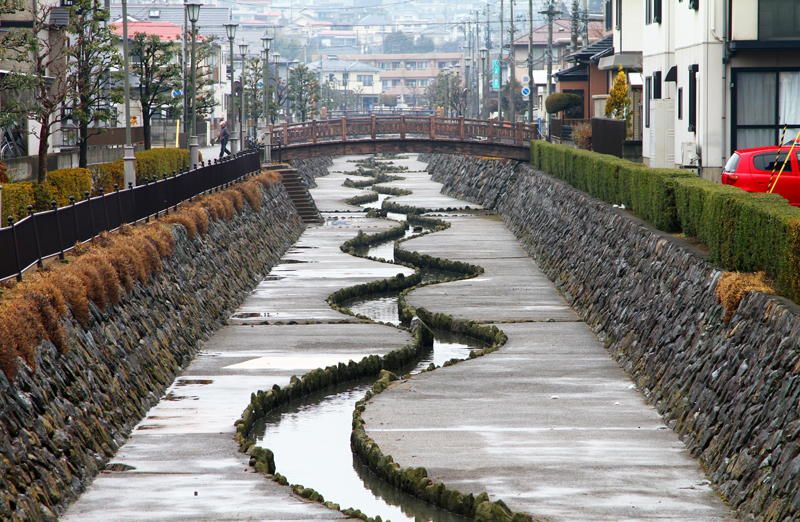
Tamagawa in Noda <Information>
- Name: Tamagawa in Noda
- Address: 3-1, Tsurugaya, Tagajo City, Miyagi Prefecture, 985-0871
- Phone number: 022-364-5901 (Tagajo City Tourism Association)
- URL: Tagajo City Tourism Association
Google Map
"Okii" is a heartbreaking story of a woman who doesn't want to break up
More sorrowful than the pain of being burned by the storm is the separation from the palace. (Ono no Komachi, Kokin Wakashu)
This poem, written by Ono no Komachi in the Kokin Wakashu, expresses the sadness of a man and woman parting ways. The man wants to return to the capital, while the woman does not want to part ways, and they regret their parting near Miyakoshima (Okii)
Okinoi (Okinoishi/Okinoi) is a large stone that stands alone in a pond about 1km away in a residential area called Sendai Bay, and it is thought that at the time it was a lonely place with a view all the way to the coast. Okinoi was developed and preserved by the Sendai domain during the Edo period. Okinoi is a nationally designated scenic spot, "A scenic spot on the Narrow Road to the Deep North."
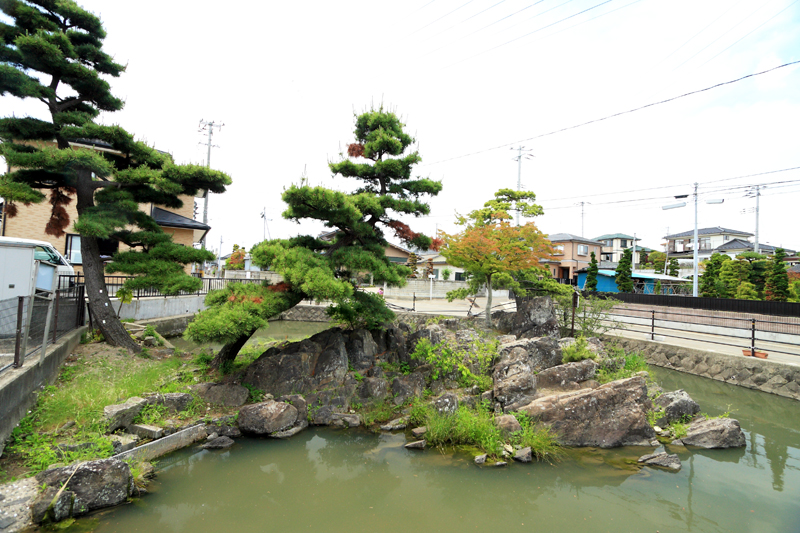
Okii (Okinoishi) <Information>
- Name: Okii (Oki no Ishi)
- Address: 2-19, Tagajo City, Miyagi Prefecture, 985-0874
- Phone number: 022-364-5901 (Tagajo City Tourism Association)
- URL: Tagajo City Tourism Association
Google Map
"Sueno Matsuyama" - a place that has never been overtaken by waves, either in the past or now
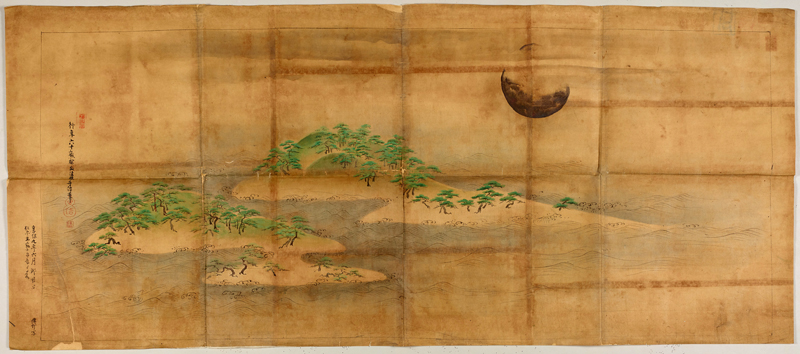
The last place Basho stopped off at was Suenomatsuyama. Suenomatsuyama is a small hill located behind Hokokuji Temple on the north side of Okii, with an elevation of about 8m. Near the top stands a towering black pine tree estimated to be 480 years old and about 19m tall
As I wring my sleeves in sympathy with the promise I made, the waves of Matsuyama at the end of my life are like a swaying wave. (Kiyohara Motosuke [Goshuishu/Ogura Hyakunin Isshu])
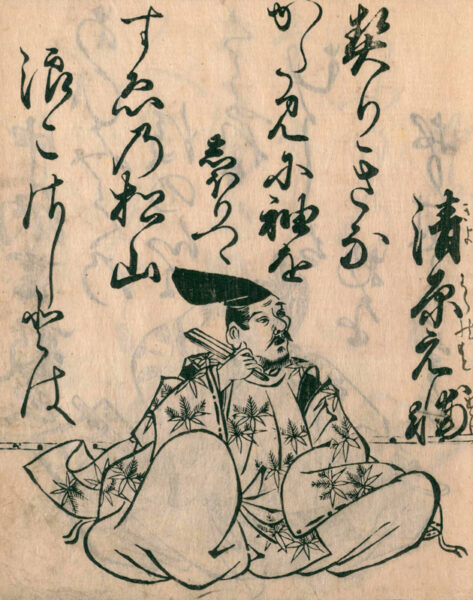
This poem expresses feelings for a woman who left him, saying, "Just as the waves never cross the end of Matsuyama, so we promised not to change our minds." It is the most well-known poem about "End of Matsuyama."
The tsunami that struck during the Great East Japan Earthquake did not cross "Suenomatsuyama." This inadvertently proves the saying, "Suenomatsuyama, nami kosaji." In 869, around the time the poem was composed, a major earthquake (the Jogan earthquake) of magnitude 8.3 hit the Tohoku region. The Heian period history book, "Nihon Sandai Jitsuroku," records that the tsunami struck Taga Castle and submerged the Sendai Plain. However, even with that tsunami, "Suenomatsuyama" remained, saving the people. "Suenomatsuyama" was a metaphor for something that would never happen
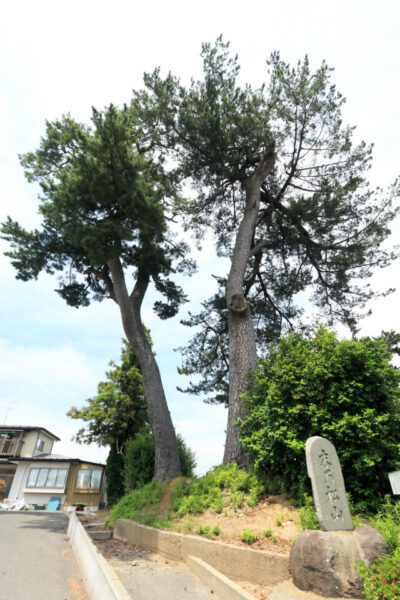
Sueno Matsuyama <Information>
- Name: Suenomatsuyama
- Address: 2-8-28 Yahata, Tagajo City, Miyagi Prefecture, 985-0874
- Phone number: 022-364-5901 (Tagajo City Tourism Association)
- URL: Tagajo City Tourism Association
Google Map
Leaving "Sueno Matsuyama" behind, Basho headed from Shiogama to Matsushima
*I have some objections to the "Tsubohi" and "Noda no Tamagawa" in the Utamakura. I'll talk about that another time
*The Taga Castle Ruins and Temple Ruins, Taga Castle Monument (Tsubo Monument), Okii, and Suenomatsuyama are designated as cultural heritage sites included in the Japan Heritage "Date Culture Nurtured by Masamune."



![[Series ②: The role of the previous nine years and the role of the second three years] The role of the previous nine years is from the truce to the battle again, and the Kokufu army is struggling Taga Castle Ruins](https://jp.neft.asia/wp-content/uploads/2023/11/a0b8b1213124e7a13c7308fa81e053a2-150x150.jpg)
![The place you should not come and the phantom checkpoint "Nakura no Seki" written in waka poetry [Fukushima Prefecture] 0438-016](https://jp.neft.asia/wp-content/uploads/2022/11/0438-016-150x150.jpg)
![Hiyama Ando clan, ruled Akita during the Sengoku period and based in Noshiro [Akita Prefecture] Akita Fan](https://jp.neft.asia/wp-content/uploads/2025/03/0275d341934f847be3452ea4662d9a4e-150x150.jpg)
![Kakunodate, which was founded by the Tozawa clan during the Sengoku period and built by the Ashina clan during the Edo period [Senboku City's highlights ②] Cherry blossoms on the banks of the Hinokinai River - Night cherry blossoms_Akita Fan](https://jp.neft.asia/wp-content/uploads/2025/07/98886c5b97b9b3f8d61f0ae473e583b1-150x150.jpg)
![From Iwaya in Kurotsuka to Bunchisuriishi. Matsuo Basho visited the legendary rock [Fukushima Prefecture] 2016_07_MG_7167](https://jp.neft.asia/wp-content/uploads/2022/11/2016_07_MG_7167-150x150.jpg)
![Scary and slightly sad stories... "Michinoku Otogi Kaido" with many stories left behind [Shichigasyu-cho, Shiraishi City, Miyagi Prefecture] Fairytale images](https://jp.neft.asia/wp-content/uploads/2023/04/be73b392233d2fe609797e999f8ca547-1-150x150.jpg)
![[Serialization: Following the narrow path of the depths ③] After leaving Sendai, Basho and Sora arrive at Matsushima by boat from Shiogama. Oku no Hosomichi 3](https://jp.neft.asia/wp-content/uploads/2023/09/8d13d45bbc671b05b0b298bc51e72716-150x150.jpg)
![[Akita Prefecture] Kosaka Town is a town that has taken you back in time to the Meiji era. Cultural heritage left behind by Kosaka Mine 1_22](https://jp.neft.asia/wp-content/uploads/2023/07/1_22-150x150.jpg)


